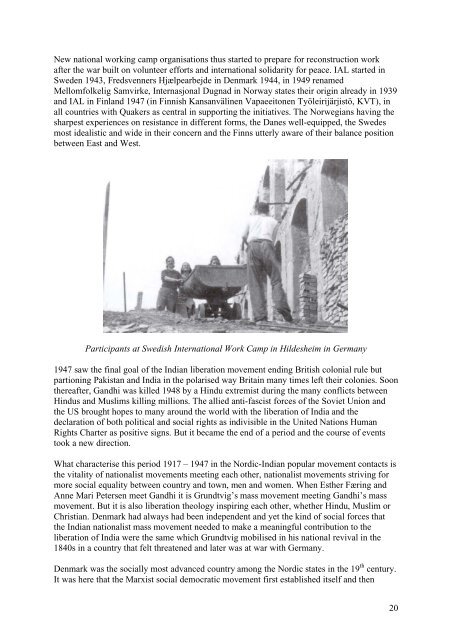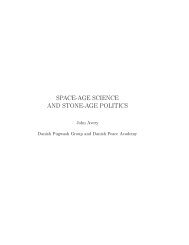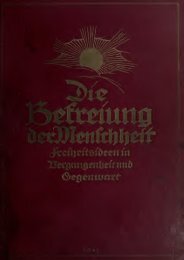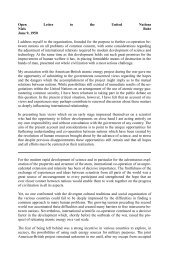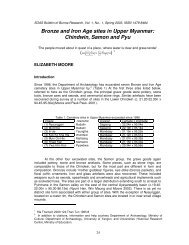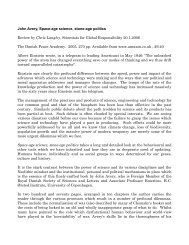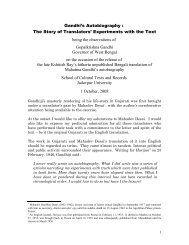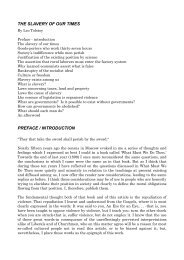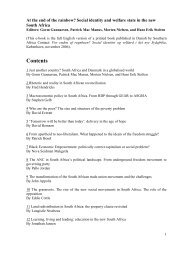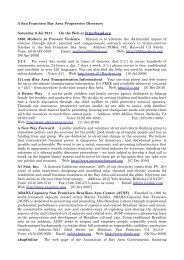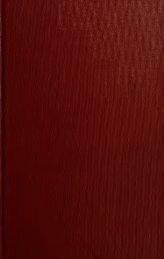Indian-Nordic Encounters 1917-2006 - Det danske Fredsakademi
Indian-Nordic Encounters 1917-2006 - Det danske Fredsakademi
Indian-Nordic Encounters 1917-2006 - Det danske Fredsakademi
Create successful ePaper yourself
Turn your PDF publications into a flip-book with our unique Google optimized e-Paper software.
New national working camp organisations thus started to prepare for reconstruction work<br />
after the war built on volunteer efforts and international solidarity for peace. IAL started in<br />
Sweden 1943, Fredsvenners Hjælpearbejde in Denmark 1944, in 1949 renamed<br />
Mellomfolkelig Samvirke, Internasjonal Dugnad in Norway states their origin already in 1939<br />
and IAL in Finland 1947 (in Finnish Kansanvälinen Vapaeeitonen Työleirijärjistö, KVT), in<br />
all countries with Quakers as central in supporting the initiatives. The Norwegians having the<br />
sharpest experiences on resistance in different forms, the Danes well-equipped, the Swedes<br />
most idealistic and wide in their concern and the Finns utterly aware of their balance position<br />
between East and West.<br />
Participants at Swedish International Work Camp in Hildesheim in Germany<br />
1947 saw the final goal of the <strong>Indian</strong> liberation movement ending British colonial rule but<br />
partioning Pakistan and India in the polarised way Britain many times left their colonies. Soon<br />
thereafter, Gandhi was killed 1948 by a Hindu extremist during the many conflicts between<br />
Hindus and Muslims killing millions. The allied anti-fascist forces of the Soviet Union and<br />
the US brought hopes to many around the world with the liberation of India and the<br />
declaration of both political and social rights as indivisible in the United Nations Human<br />
Rights Charter as positive signs. But it became the end of a period and the course of events<br />
took a new direction.<br />
What characterise this period <strong>1917</strong> – 1947 in the <strong>Nordic</strong>-<strong>Indian</strong> popular movement contacts is<br />
the vitality of nationalist movements meeting each other, nationalist movements striving for<br />
more social equality between country and town, men and women. When Esther Færing and<br />
Anne Mari Petersen meet Gandhi it is Grundtvig’s mass movement meeting Gandhi’s mass<br />
movement. But it is also liberation theology inspiring each other, whether Hindu, Muslim or<br />
Christian. Denmark had always had been independent and yet the kind of social forces that<br />
the <strong>Indian</strong> nationalist mass movement needed to make a meaningful contribution to the<br />
liberation of India were the same which Grundtvig mobilised in his national revival in the<br />
1840s in a country that felt threatened and later was at war with Germany.<br />
Denmark was the socially most advanced country among the <strong>Nordic</strong> states in the 19 th century.<br />
It was here that the Marxist social democratic movement first established itself and then<br />
20


